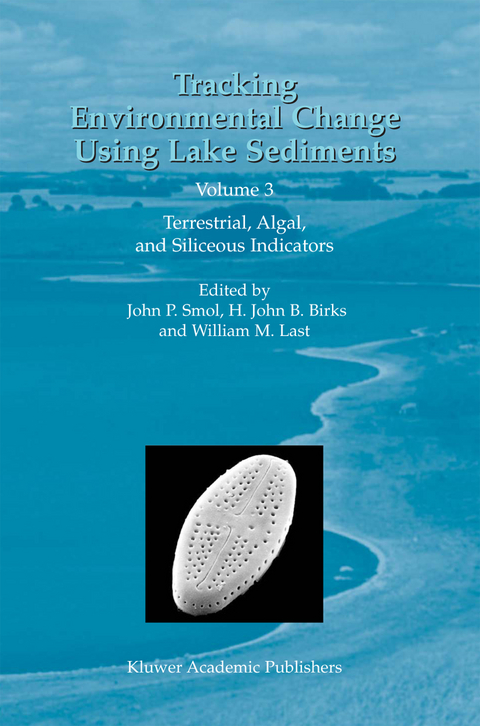
Tracking Environmental Change Using Lake Sediments
Springer (Verlag)
978-90-481-6048-8 (ISBN)
Frost Introduction Sponge species and their distribution Sponge life history Sponge spicules Paleolimnological studies using freshwater sponges Techniques for assessing sponge spicules in sediments Future applications of sponges in paleolimnology Summary Acknowledgements References 13. Siliceous protozoan plates and scales. M. S. V. Douglas & J. P. Smol 265 Introduction History and taxonomy Ecology Paleoecological potential Laboratory methods Data presentation Paleolimnological applications Other related siliceous indicators Summary Acknowledgements References 14. Biogenic silica. D.J. Conley & C.L Schelske 281 Introduction and history Methods Applications Future directions Summary Acknowledgements References 15. Sedimentary pigments.
John P. Smol is a professor in the Biology Department at Queen's University (Canada), with a cross-appointment at the School of Environmental Studies. He co-directs the Paleoecological Environmental Assessment and Research Lab (PEARL). Professor Smol is co-editor of the Journal of Paleolimnology and holds the Canada Research Chair in Environmental Change. William M. Last is a professor in the Department of Geological Sciences at University of Manitoba (Canada) and is co-editor of the Journal of Paleolimnology.
Using Biology to Study Long-Term Environmental Change.- Pollen.- Conifer Stomata.- Plant Macrofossils.- Charcoal as a Fire Proxy.- Non-Pollen Palynomorphs.- Protozoa: Testate Amoebae.- Diatoms.- Chrysophyte Scales and Cysts.- Ebridians.- Phytoliths.- Freshwater Sponges.- Siliceous Protozoan Plates and Scales.- Biogenic Silica.- Sedimentary Pigments.
| Reihe/Serie | Developments in Paleoenvironmental Research ; 3 |
|---|---|
| Zusatzinfo | XXV, 371 p. |
| Verlagsort | Dordrecht |
| Sprache | englisch |
| Maße | 155 x 235 mm |
| Themenwelt | Naturwissenschaften ► Biologie |
| Naturwissenschaften ► Chemie ► Organische Chemie | |
| Naturwissenschaften ► Geowissenschaften ► Geologie | |
| Naturwissenschaften ► Geowissenschaften ► Hydrologie / Ozeanografie | |
| Naturwissenschaften ► Geowissenschaften ► Mineralogie / Paläontologie | |
| Naturwissenschaften ► Physik / Astronomie ► Angewandte Physik | |
| ISBN-10 | 90-481-6048-0 / 9048160480 |
| ISBN-13 | 978-90-481-6048-8 / 9789048160488 |
| Zustand | Neuware |
| Haben Sie eine Frage zum Produkt? |
aus dem Bereich


